Introduction
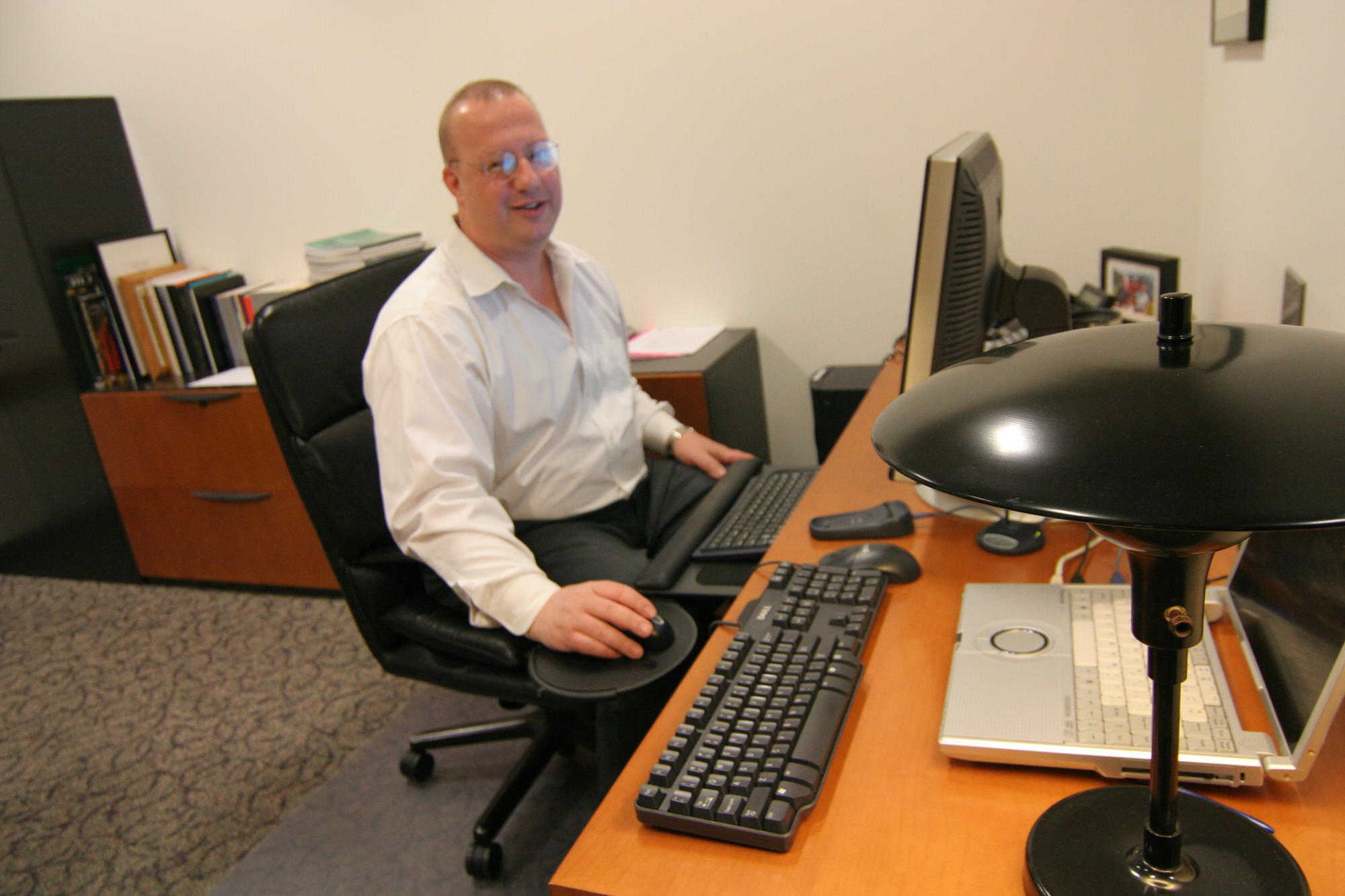 The main SPL laboratory also contains offices for the research leadership of the Radiology Department, such as the SPL director, Ron Kikinis.
The main SPL laboratory also contains offices for the research leadership of the Radiology Department, such as the SPL director, Ron Kikinis.
The Surgical Planning Lab (SPL) combines the technical strengths of an advanced computer science facility with the imaging resources and clinical expertise of a world-class research hospital. In the SPL environment, computer scientists, imaging experts, and physicians work collectively to solve some of the most challenging problems in medicine.
To support this research, the SPL's facilities are designed to foster experimentation, collaboration, innovation, and discovery. The lab encourages researchers with early or speculative hypotheses in any aspect of image-augmented medicine to prototype and evaluate their ideas with real data and real clinical needs. Successful experiments are further developed through grants and collaborative projects, and the results incorporated into the SPL's framework of algorithms, software tools, and medical techniques. This environment, in turn, provides a foundation for accelerating other ideas and developing new research directions that support the building of a diverse and talented community. From its beginnings in 1988 as a small group of researchers with a handful of workstations off the main hallway at Brigham and Women's Hospital (BWH), the SPL has expanded to three primary locations, several clinical points of presence, and a number of satellite facilities.
The SPL continues to expand its infrastructure to support highly interactive virtual collaborations among multiple medical, academic, and industrial partners in diverse locations nationally and internationally.
People and Technology
Highlights: A group of researchers, clinicians, trained staff, subcontractors, and collaborators working together.
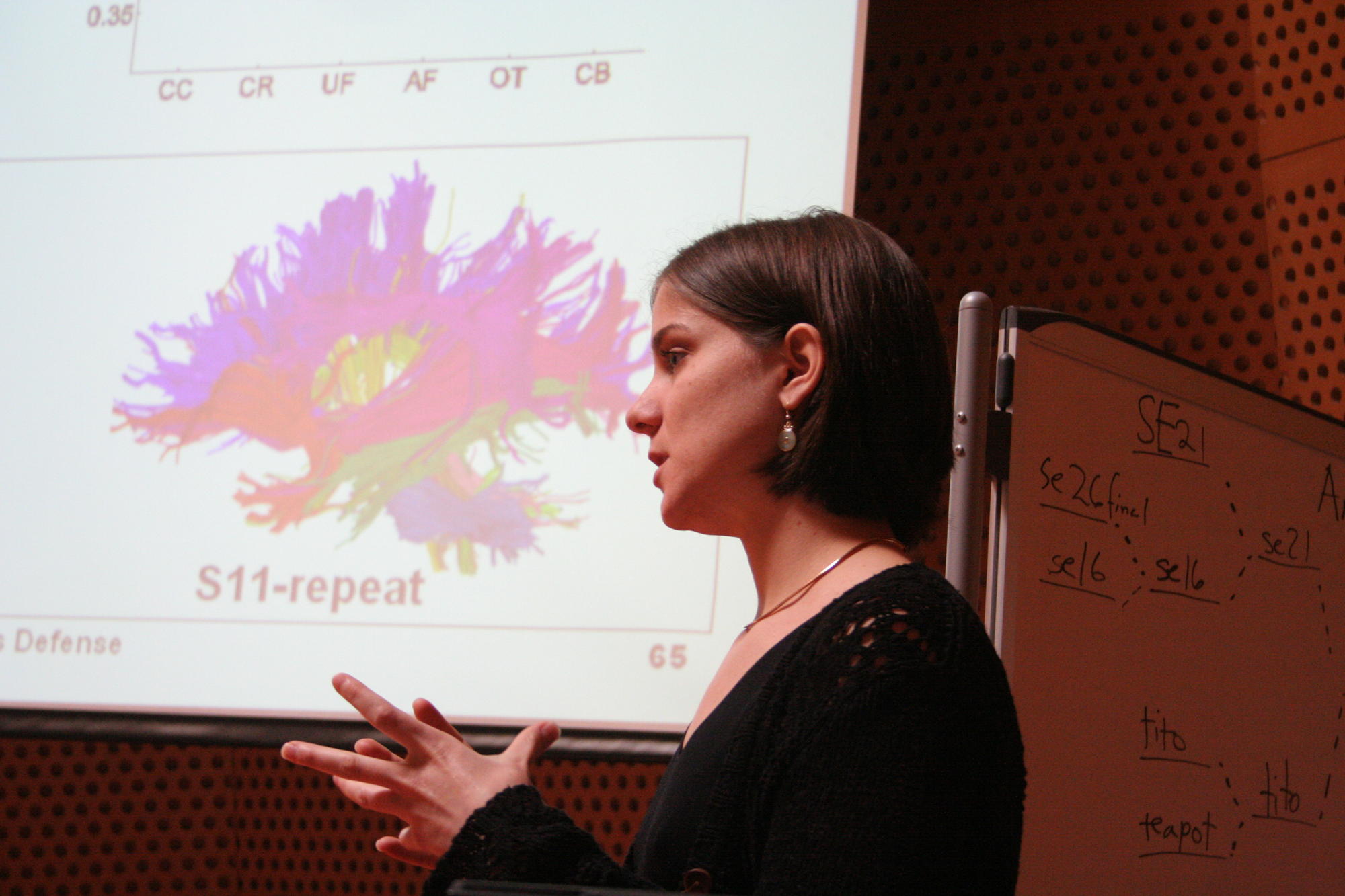 Graduate students play a pivotal role in the SPL research. Here, a MIT graduate student defends her doctoral thesis in DTI tractography visualization.
Graduate students play a pivotal role in the SPL research. Here, a MIT graduate student defends her doctoral thesis in DTI tractography visualization.
The individuals who comprise the SPL community are the lab's most important resource. A group of approximately 10 scientists and physicians make up the SPL’s core leadership and research team. They provide supervision and guidance for more junior members of the lab. While the SPL is not a degree granting program there are many students from other institutions doing research in the lab. Augmenting the experts who develop new algorithms and computational techniques, the SPL employs a team of engineers and other professional and support staff who, together, form a literal “human interface” to the lab’s computation and medical resources.
The staff includes specialists in systems and network administration, software engineering and testing, web authoring, clinical data transfer, application training and dissemination, and grant administration. These dedicated individuals streamline the many time-consuming tasks associated with scientific research, permitting new collaborators to achieve results more quickly. Working together, this team of research leaders, students, and staff members is integral to the delivery of world-class clinical research computing and image-augmented health care.
Beyond this core group, the SPL community encompasses a number of long-time collaborators and contractors in the Boston area. Over the years, the lab’s collaborative community has grown significantly, in part, because of the new communication and sharing technologies made possible by the Internet. The SPL has expanded its net- and web-based infrastructure to encourage open collaboration and dissemination of information.
Collaboration and Data Sharing Tools
Highlights: Web-based tools, such as collaborative text (wikis) and file sharing, encourage effective communication and dissemination.
 SPL benefits from close collaborations with other research efforts. This picture shows the 2006 NA-MIC all-hands meeting in Salt Lake City
SPL benefits from close collaborations with other research efforts. This picture shows the 2006 NA-MIC all-hands meeting in Salt Lake City
As the SPL's circle of collaboration grew beyond its roots on the BWH campus, the lab's infrastructure changed to support a more distributed model of computation and resource sharing. In some cases, existing resources such as the SPL's electronic mail and calendar services were extended, enabling researchers from all over the world to coordinate their activities. In other cases, new web-based applications were implemented permitting the SPL to act as a hub for sharing ideas and data as part of its outreach and collaborative activities.
The SPL's presence on the web dates back to 1995 when the lab pioneered the use of the Internet at the BWH to distribute papers and images of early surgical visualization and simulation. Transforming these static pages into a more dynamic model for idea sharing, the lab's first Wiki-based collaborative text environment, DocBook, was installed for internal use in 2000. Since 2003, the NA-MIC research effort and several other virtual collaborations have been using Wiki-based collaborative text systems as an integral technology to centralize and manage group knowledge about large projects.
File and data-sharing is another essential aspect of virtual collaboration. For this purpose, the SPL has deployed a web file-sharing system called "Share". Based at the SPL and built from a commercial product developed by Xythos, Inc., share.spl.harvard.edu allows individuals to exchange files and data of any size across the web with colleagues, participants in a large research project, or the public at large. "Share" distributes responsibility for file or folder administration, thereby reducing or eliminating the need for central administration or control for most tasks. In particular, a flexible file permission and access control mechanism enables users to specify which users or groups can read, write, and manipulate specific files and folders.
Local Centers for Collaboration
Highlights: Multiple local research and clinical sites are tied into the SPL network through high-speed connections, sharing computational resources, and data.
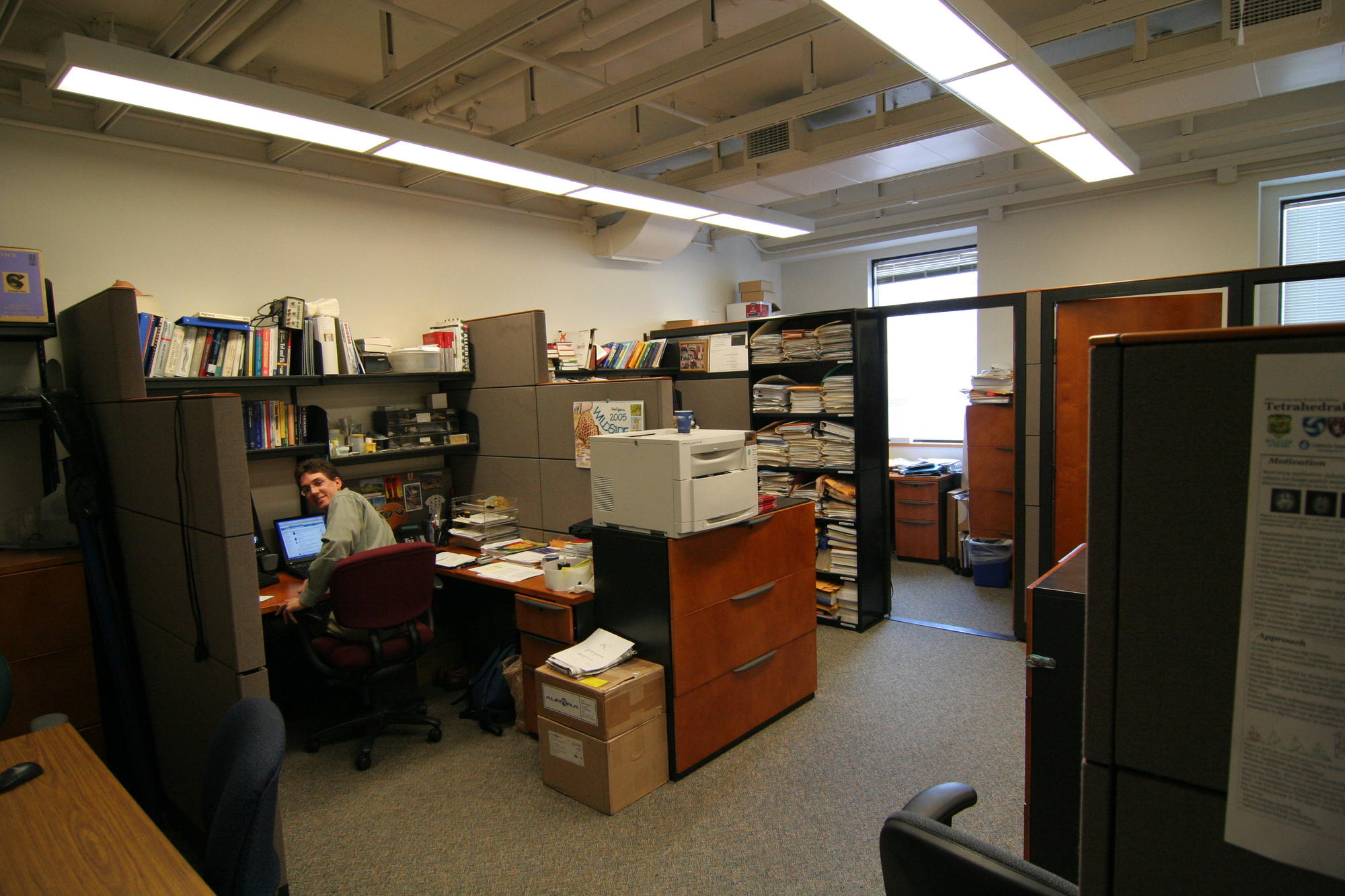 The SPL provides office space for researchers in the Thorn Medical Research Building, shown here, and at other locations.
The SPL provides office space for researchers in the Thorn Medical Research Building, shown here, and at other locations.
The SPL maintains strong connections to other clinical and research locations both on and off the hospital campus. These collaborating facilities currently include the BWH’s Image-Guided Therapy Center (IGT), integrated surgical and imaging suite, the Department of Neurosurgery, a multiple sclerosis imaging center at 221 Longwood Avenue, Children's Hospital, the Harvard Medical School campus, and the Brockton Veteran's Administration (VA) Medical Center.
Each of these sites, combined with satellite offices and non-clinical research facilities such as the SPL's main engineering facility at 1249 Boylston Street, are connected directly to the SPL's computing infrastructure via dedicated network links.
Computational resources can be shared between locations as if they were local. Scientists can communicate, share ideas, and work together regardless of their physical location.
Collaboration and Display Spaces
Highlights: Dedicated meeting space and displays encourage collaboration.
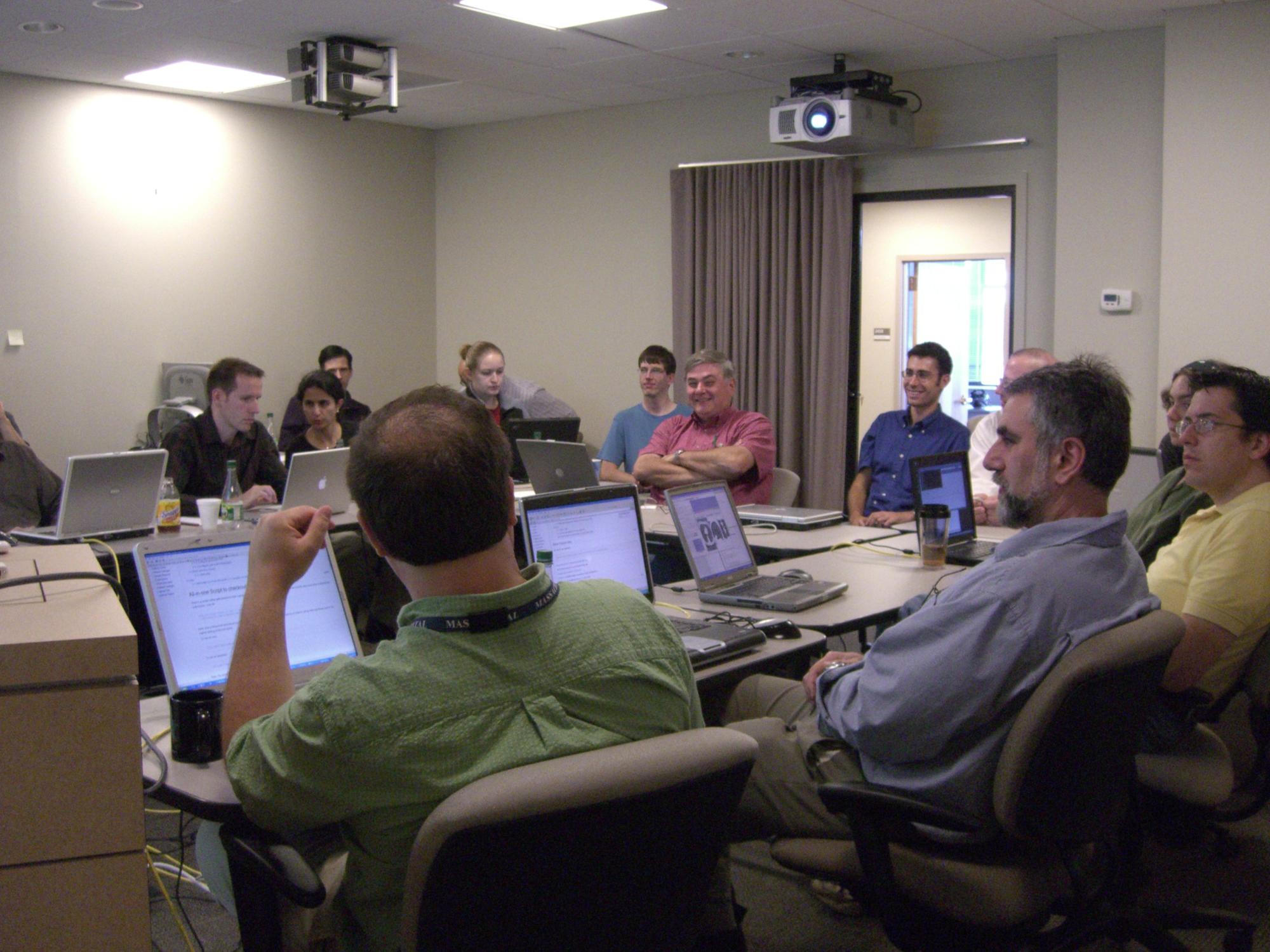 The conference room at the SPL satellite facility at 1249 Boylston Street is used to host small conferences and meetings, such as this joint NAC and NA-MIC developers meeting.
The conference room at the SPL satellite facility at 1249 Boylston Street is used to host small conferences and meetings, such as this joint NAC and NA-MIC developers meeting.
As part of the SPL's mission to make the results of medical computation and analysis available to collaborators and the larger research community, the lab operates a meeting and ‘demo room’ at its 1249 Boylston Street facility. This room has been used for small conferences, round table discussions, teaching sessions, presentations, and collaborative development efforts. The demo room also includes a stereoscopic projection system interfaced to an SPL workstation for three-dimensional visualization and data display.
Physical and Computational Infrastructure
Highlights: Proximity to BWH’s clinical and imaging environment enables close clinical collaborations.
 The SPL’s primary laboratory space, located in the main Brigham and Women’s clinical area, provides drop-in spaces for researchers and convenient access to surgical and radiological suites.
The SPL’s primary laboratory space, located in the main Brigham and Women’s clinical area, provides drop-in spaces for researchers and convenient access to surgical and radiological suites.
The physical center of the lab is located immediately adjacent to the surgical suites at BWH. This facility includes the SPL's central computation infrastructure, the hub of its dedicated computer network, multiple graphics workstations for interactive visualization of medical data, a robotics laboratory, and leadership and administration offices.
Just down the hall from the main SPL lies the Department of Radiology's main imaging center that includes scanners for magnetic resonance imaging (MRI), computed tomography (CT), nuclear medicine, and other imaging technologies, all connected via high-speed networking to the SPL and the hospital's information system.
The proximity of the SPL's main facility to radiology and surgical centers within the hospital is critical to establishing new clinical collaborations and grounding our research with a strong sense of clinical relevance.
Networking
Highlights: Dedicated high-speed networking forms the foundation for all major SPL activities.
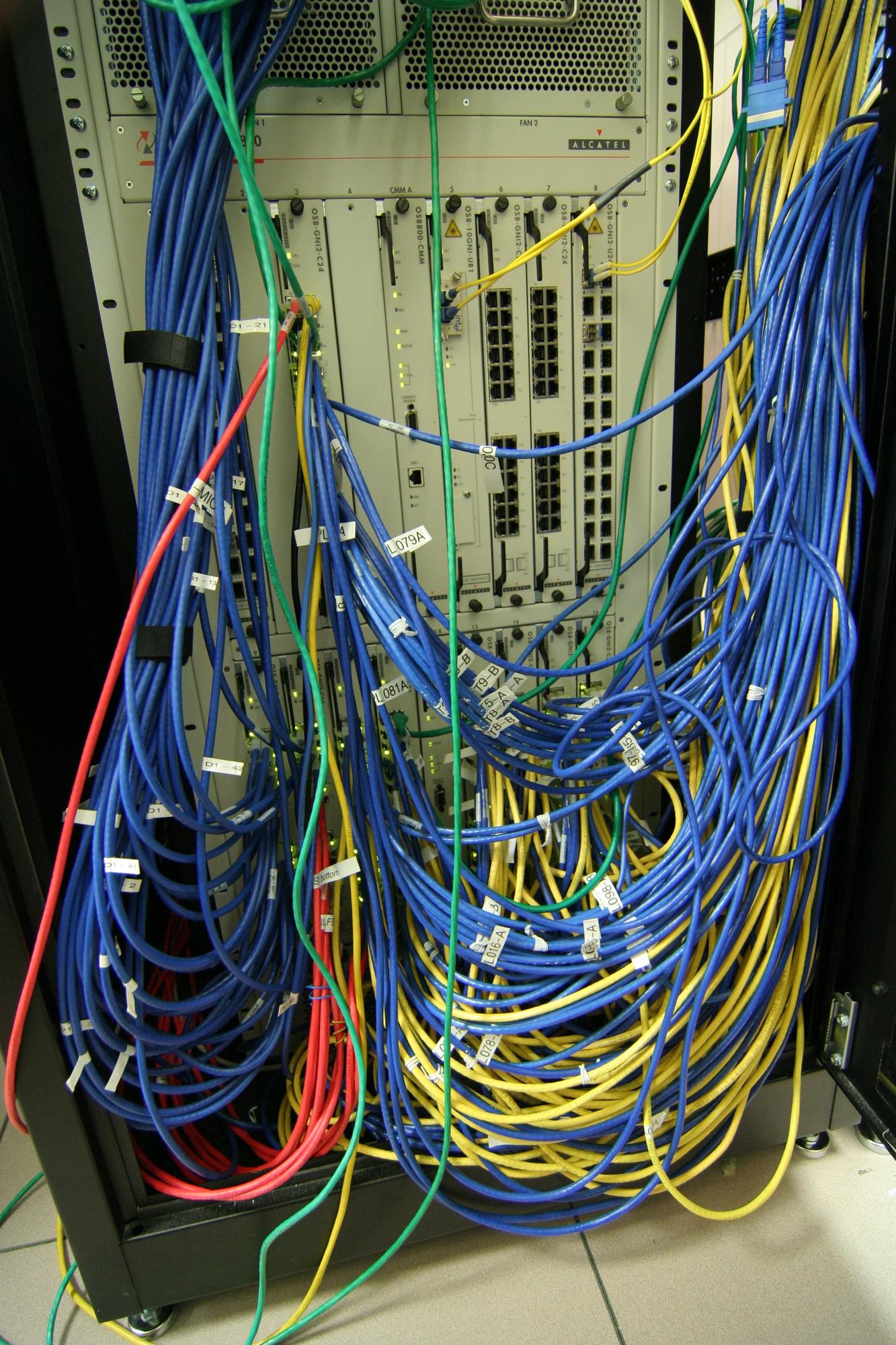 The SPL maintains its own networking infrastructure, connecting multiple physically separated sites with high-speed and redundant network links.
The SPL maintains its own networking infrastructure, connecting multiple physically separated sites with high-speed and redundant network links.
The SPL's computer network forms the backbone of all its research activities either on campus or through virtual collaboration. The lab has engineered its network to provide for high capacity, flexibility, reliability, and growth. Dedicated Alcatel network switches link locations together using a mix of gigabit and 10-gigabit Ethernet optical fiber connections. The SPL works closely with the Partners Healthcare networking group to provide fiber connections between sites and maintain links from the SPL network to the hospital's Internet connection, using such means as an Internet2 uplink.
The SPL's network capacity is deliberately over specified for a typical research group of this size. Clinical needs may require bandwidth beyond those of common network applications. Excess capacity also encourages developers to follow the SPL philosophy of “prototype, validate, and refine.” As well, researchers can focus on algorithmic details and clinical needs early in the software development process rather than dealing with networking or other performance requirements. Finally, extra network capacity allows the SPL to distribute resources such as computers, storage, and tape backup units in multiple physical locations creating a buffer for new requests for collaborations and future growth.
In short, the SPL network is designed to provide researchers with as much flexibility and room for expansion as possible, while maintaining security and respecting the legal and ethical mandates for subject confidentiality and privacy. To this last point, users involved in processing data from human subjects comply with required institutional and governmental training and handling requirements. External access to SPL services is restricted both by Partners networking and by internal SPL access control. Specific services such as login, electronic mail access, and file sharing all have customized security policies to limit possible exposure to hostile attack or to the compromise of sensitive data.
Into the Hospital, Inside the Operating Room
Highlights: The SPL brings computation and networking into the operating room, enabling new image-based planning and therapy.
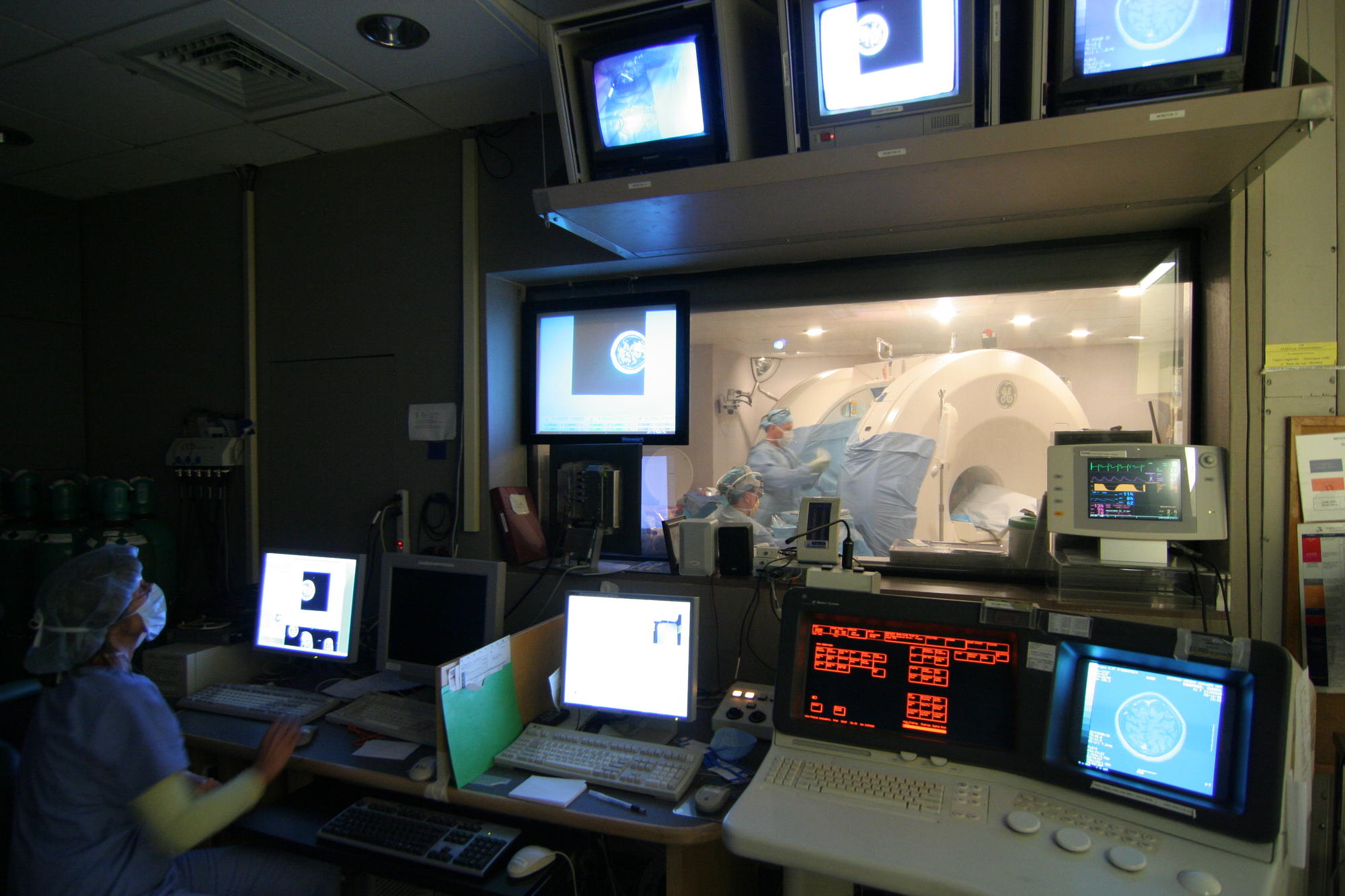 The SPL provides research, computation, and networking technologies to support image-guided therapy in this MRT suite at Brigham and Women’s Hospital.
The SPL provides research, computation, and networking technologies to support image-guided therapy in this MRT suite at Brigham and Women’s Hospital.
The SPL works in close partnership with clinicians throughout the BWH to learn from current medical practice and to translate emerging research concepts into future clinical tools. To do this effectively, the SPL has incorporated its network and computer infrastructure into several clinical areas of the hospital.
The SPL's presence in the operating room dates from 1990 when researchers first used computer graphics workstations and video cameras to superimpose actual and virtual images of a surgical site. This prototype capability evolved into a robust, custom-built surgical visualization cart in 1993, and a second version with optical registration hardware in 1996. These carts were rolled from the SPL into the operating room and used to assist in several hundred surgical cases.
Many of the techniques developed using the SPL surgical cart found permanent use in BWH’s Magnetic Resonance Therapy (MRT) facility in 1994 as a testing tool and in 1998 as a tool for routine use.
MRT brings imagery, surgery, and computation together in a single operating theater. The MRT consists of an operating room with a custom MRI scanner, a specialized imaging suite, LCD display panels, and instrument tracking systems. The MRT allowed surgeons for the first time to create MR images of a surgical procedure under way and combine them with pre-operative scans, anatomic models, and virtual images of surgical probes, all aligned with the patient and the surgical site.
Side-by-side with the clinical computing and network facilities integrated into the MRT, SPL workstations and software programs provide access to the lab's research infrastructure. The MRT network is configured to operate independently or connected to the main SPL network over a gigabit Ethernet link. This capability is used, for example, to register preoperative data to a patient's anatomy while it is deformed by surgical intervention. Scans and other data collected during imaging and surgical procedures can also be saved for later analysis.
As is true of other SPL clinical activities, all procedures and experiments performed in MRT are regulated by the BWH’s Institutional Review Board (IRB) policies. The SPL's clinical connections include dedicated network links that provide SPL resource access to collaborators investigating multiple sclerosis at BWH’s CNI (Center for Neurological Imaging), neonatal researchers at Children's Hospital, and psychiatrists studying post-traumatic stress disorder and other mental illness at the Veteran's Administration facility in Brockton, Massachusetts, among others.
Storage and Backup
Highlights: Centralized storage and backup facilities gives users working from laptops access to workstations to share data and protect their work.
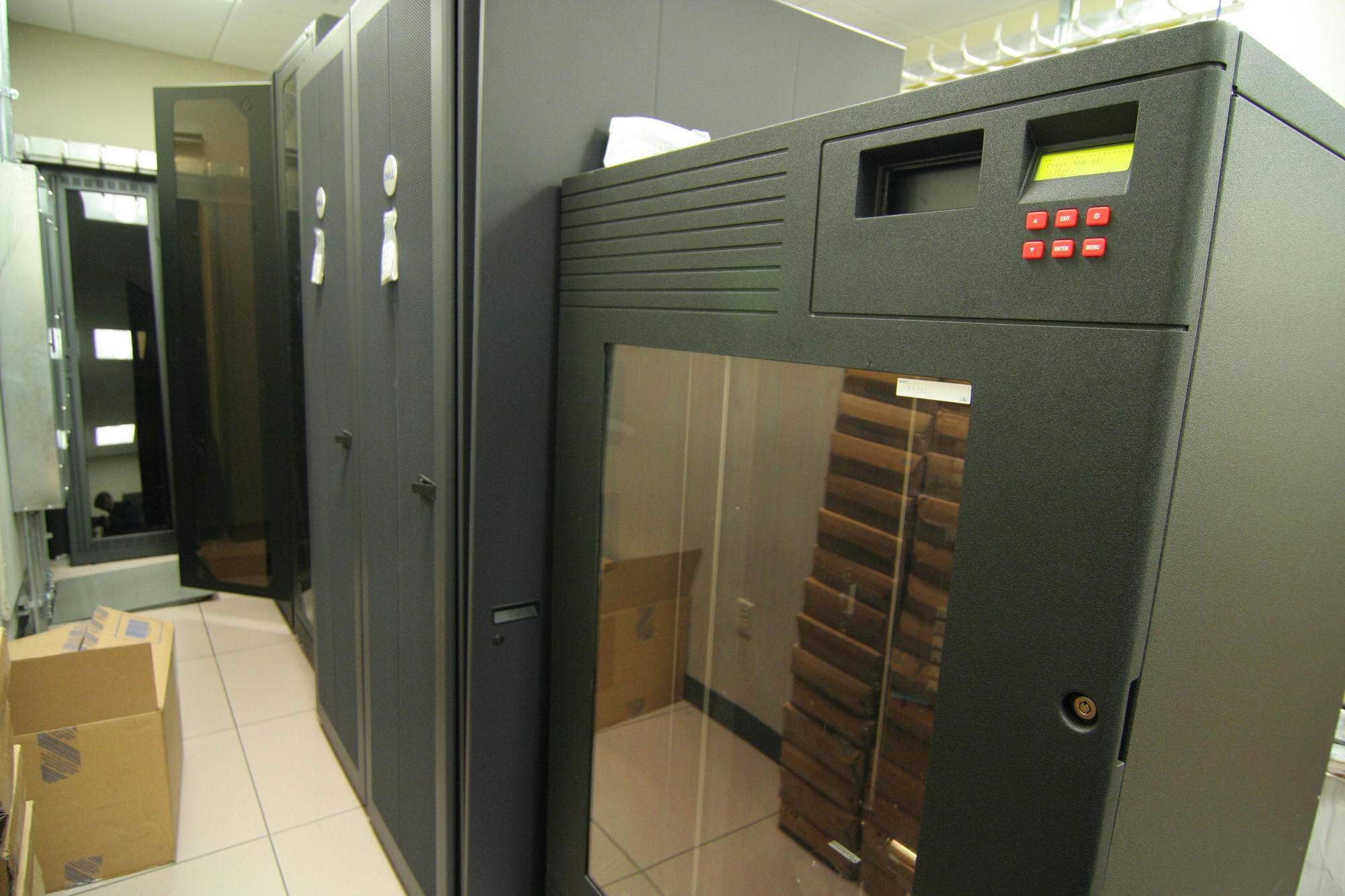 This tape library is part of the SPL's managed storage system. Research data and software is protected from accidental deletion or catastrophic equipment failure.
This tape library is part of the SPL's managed storage system. Research data and software is protected from accidental deletion or catastrophic equipment failure.
Medical research computing requires a spectrum of computation from embedded systems to high-performance computer clusters. The SPL provides individual researchers and research groups with a computational foundation that addresses a wide range of research needs, adding new hardware and software extensions as needed to accommodate emerging or unique requirements.
The laptop computer has become the portable repository for many research ideas, particularly during early development stages. The SPL accommodates laptop connections to its internal network, but encourages researchers to move their data to reliable central data storage facilities to promote backup and sharing. A network-attached disk storage array from EMC (currently 34 terabytes) is globally accessible across the network of SPL computers with performance capabilities sufficient to handle larger medical image data sets, anatomical models, and simulations. A Qualstar SAIT tape backup system provides insurance against catastrophic data loss.
SPL-owned and maintained workstations from Sun Microsystems and Dell, most with multiple processors and high-performance graphics subsystems, are also connected to these disks as well as the remaining resources on the SPL network. These workstations are available at all SPL locations for general-purpose computation and visualization. Most on-site software developers and medical researchers perform the bulk of their computation on these machines.
High Performance Computing
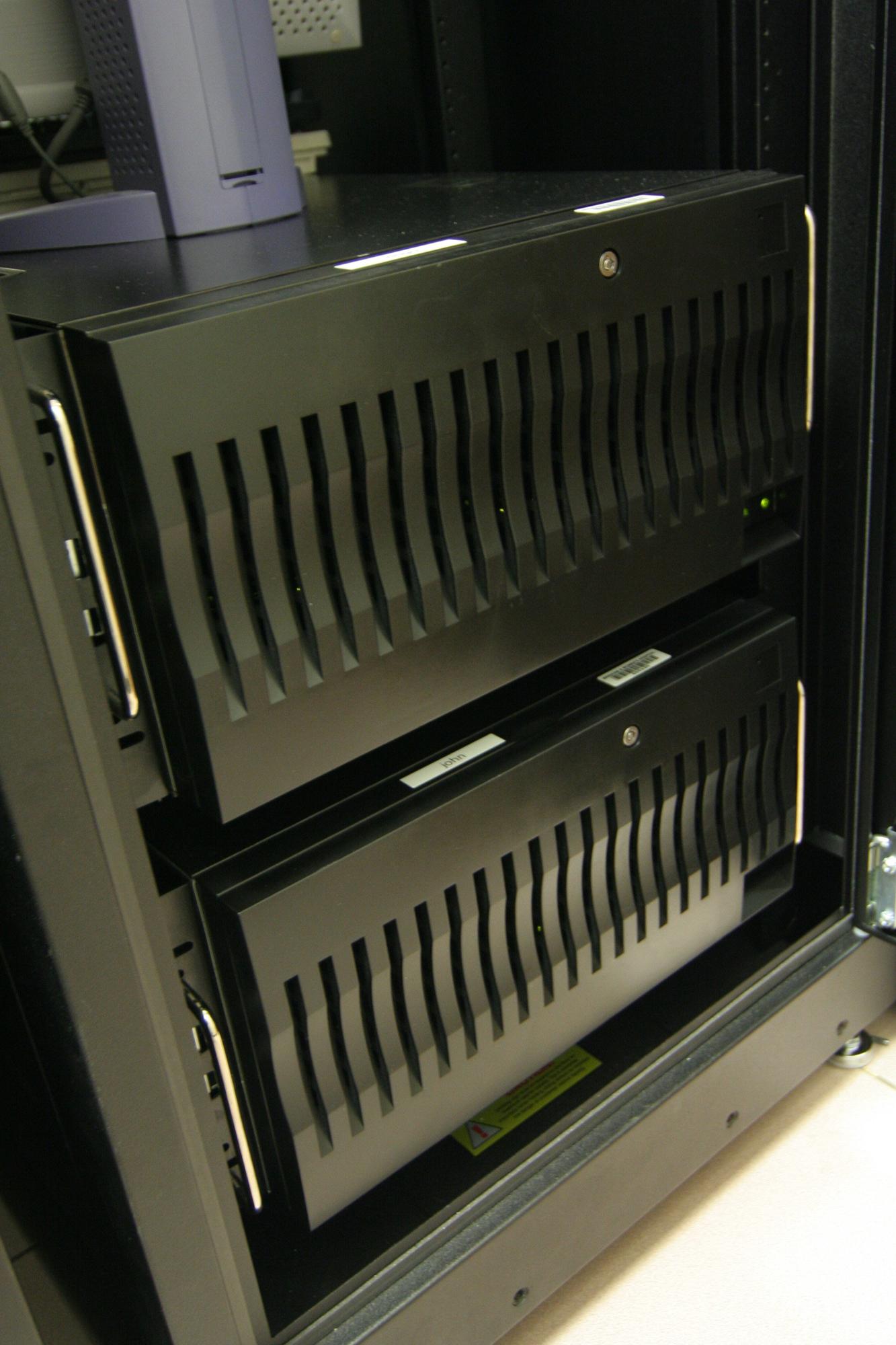 ‘Fat nodes’ at the SPL: Linux-based computers with sixteen compute cores and up to 128 GB of RAM.
‘Fat nodes’ at the SPL: Linux-based computers with sixteen compute cores and up to 128 GB of RAM.
Highlights: Multiprocessor computers and computer clusters allow large scale medical data analysis and algorithm development.
Today's world of medical computation and image processing is increasingly “data hungry.” The study of a single patient's medical data over time or the analysis of scans from entire patient populations offers the promise of new insights into the nature of disease. These kinds of studies can be processed most efficiently through the use of large multi-processor machines and computer clusters.
Years of software development experience in the medical imaging research environment has proved the principle that establishing the simplest possible migration path from desktop computers to more powerful multiprocessor machines encourages developers to make applications available to solve large and emerging problems. In 2006, the SPL purchased four multi-processor machines specifically targeted at large-scale data applications: each machine has sixteen processing cores, 64GB or 128GB of RAM, and a top-of-the-line graphics accelerator. These machines run the same version of the Linux operating system as the SPL's desktop computers, so that developers can use them easily without recompilation and have the ability to increase the speed of compilation for large software projects.
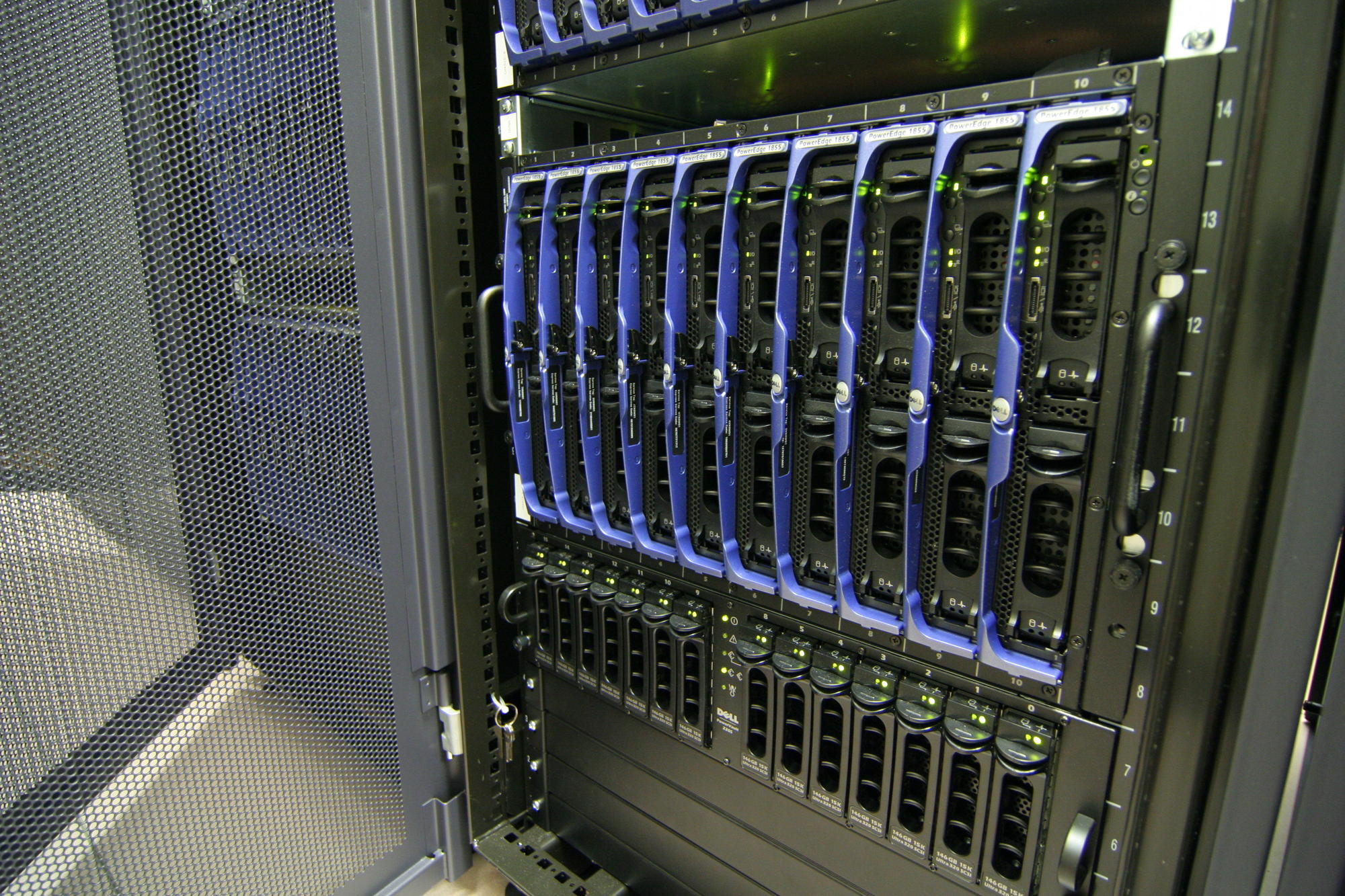
A 50 node, 200 core cluster with Infiniband interconnect came fully online in 2007.
For the most demanding interactive applications, users have direct access to the graphics monitors of these high-performance multiprocessor computers. With all of the computation, data manipulation, visualization, and interaction happening on a single extremely powerful computer, a researcher can use graphical interfaces and algorithmic techniques that are years away from running on personal computers. These prototype applications and powerful computer platforms offer a glimpse into the future possibilities of interactive computation.
Some computational tasks exceed the capabilities of even the most powerful monolithic multiprocessor machines, for example, automated processing of large numbers of subject studies or populations. Computer clusters of identically configured machines are the tools of choice for this kind of analysis. In anticipation of this need, in 2006 the SPL installed and configured a Dell cluster with 50 nodes and 100 cores running Linux. This machine was upgraded to 200 cores in early 2007. In collaboration with internal and external high performance computing experts, the SPL is enhancing its software tools to take advantage of this kind of cluster as well as larger computing grid infrastructures.
Computer Control and Robotics
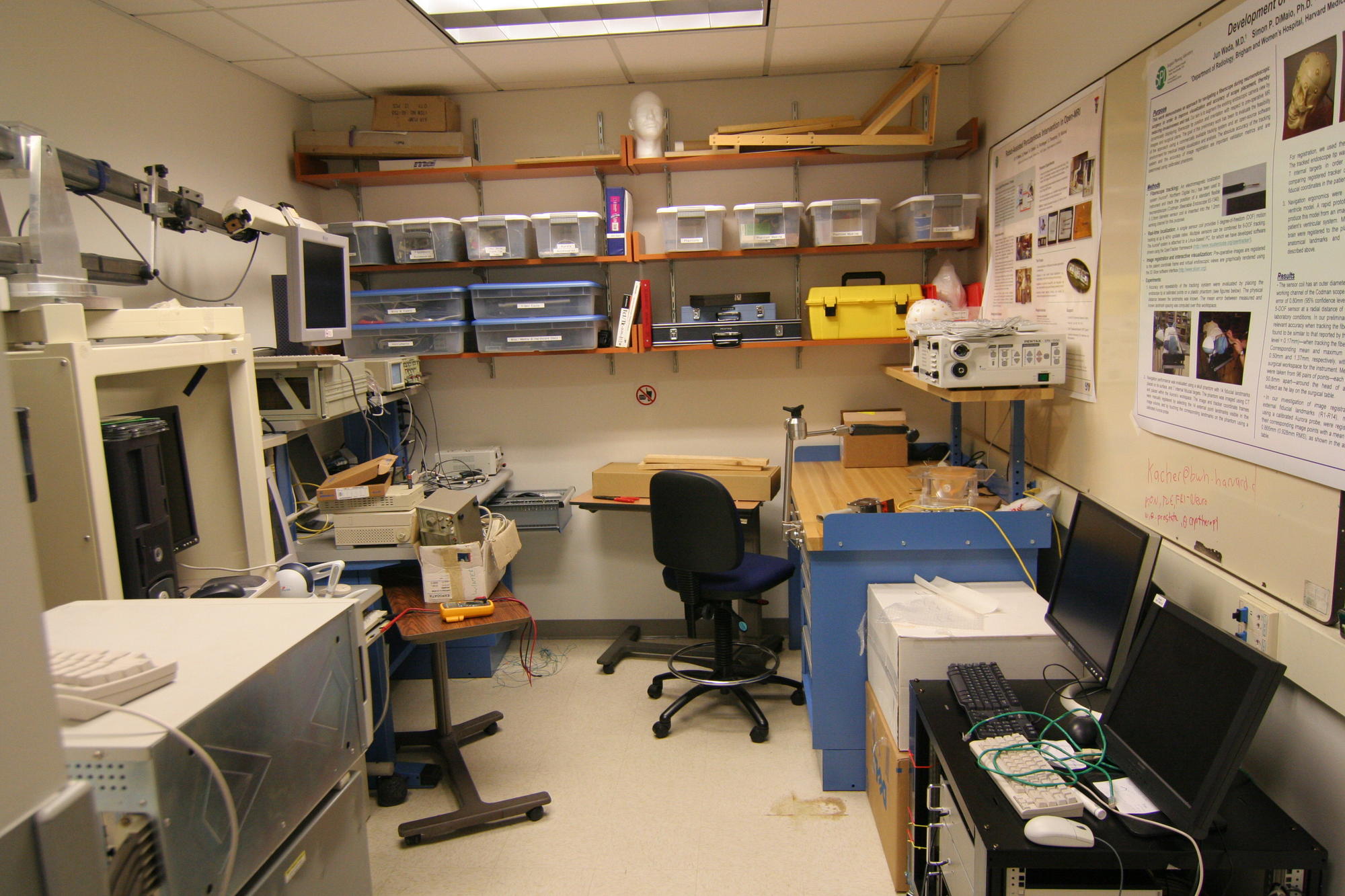 This room in the SPL’s main laboratory supports the development of robotic devices and other tools for image-guided therapy.
This room in the SPL’s main laboratory supports the development of robotic devices and other tools for image-guided therapy.
Highlights: The SPL has expertise in image-guided robotics for surgery.
The SPL's years of experience in image-based computing includes more recent developments in imaging and robotics primarily focused on image-guided surgery and other types of therapy. In cooperation with the University of Tokyo, the SPL developed an MRI-compatible surgical robot for the MRT suite that allows precise positioning of needles for biopsy and placement of radiotherapy seeds. The SPL's work in robotics is primarily funded as part of the National Center for Image-Guided Therapy (NCIGT), located at the BWH.
The SPL's Software Infrastructure
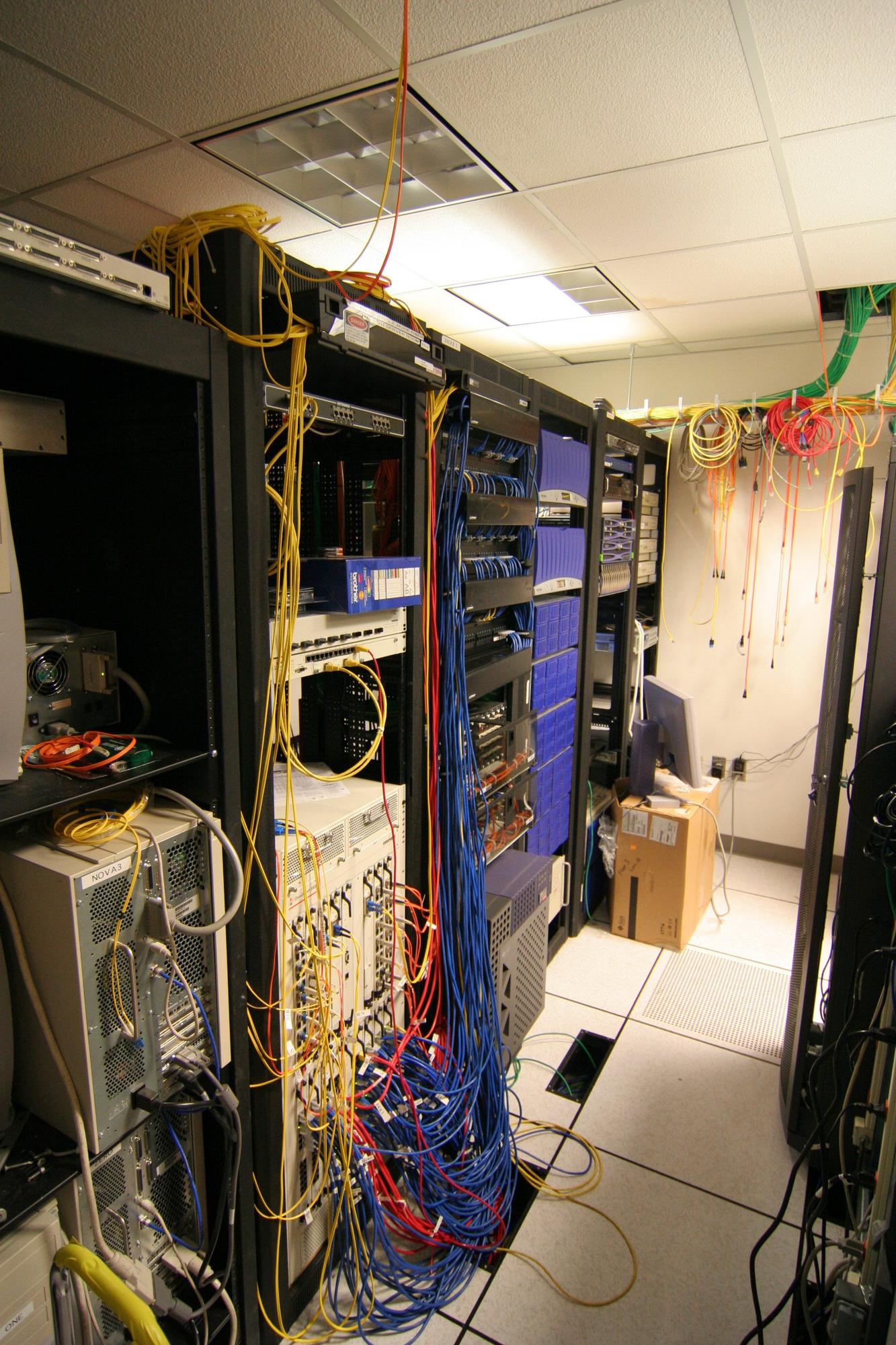 The SPL’s central machine room is the hub of its computational resources.
The SPL’s central machine room is the hub of its computational resources.
Highlights: The SPL staff maintains a software and hardware environment to support end users.
Software developers and application users benefit from a unified software infrastructure for both UNIX and Linux-based computers. This consistent software environment has hundreds of open-source, commercial, and locally-developed software packages.
The SPL’s system administration group is in charge of maintaining this software framework as well as operating system installation, hardware support, and network connectivity.
By providing this environment, the SPL encourages its researchers to focus on new developments and productive work rather than repetitive compilation and configuration of pre-existing software packages. Using this same software distribution method, a researcher can make a new version of a locally developed package available to SPL co-workers in a matter of seconds.
Medical Visualization Using Slicer
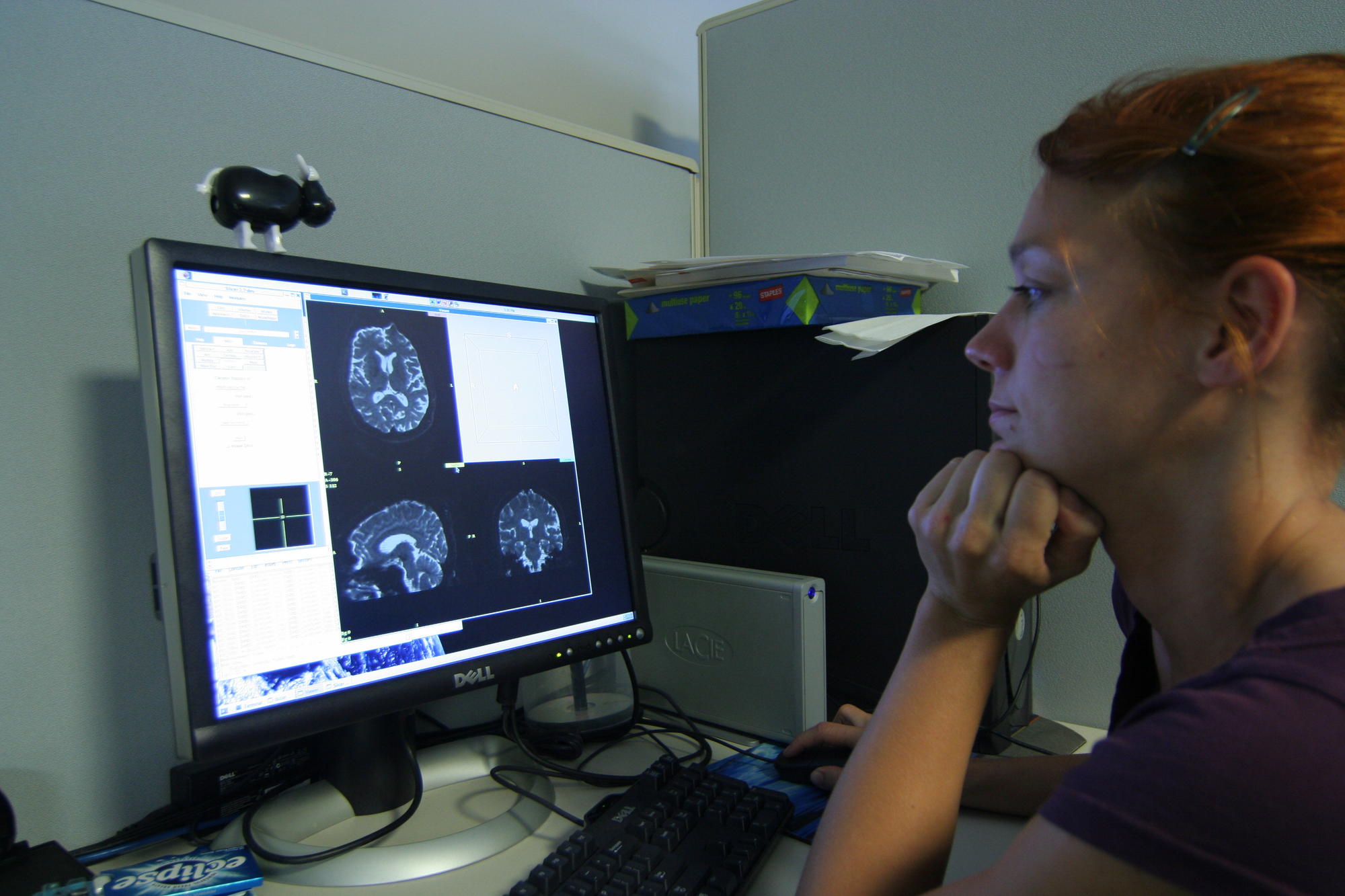 The SPL provides researchers with a powerful desktop environment for use in algorithm development and image analysis. Here, a research assistant, works on brain segmentation.
The SPL provides researchers with a powerful desktop environment for use in algorithm development and image analysis. Here, a research assistant, works on brain segmentation.
Highlights: The SPL is the lead development group for Slicer, an open-source, cross-platform medical visualization and analysis program.
3D Slicer, the heart of our open-source medical visualization and image analysis environment, has been at the center of much of SPL's software development. 3D Slicer is a modular package that includes image processing, segmentation, registration, visualization, interaction, and data analysis tools in a single user interface. Developers use internal Slicer frameworks to produce new tools that they can share with the Slicer community. Slicer's unencumbered open-source license is designed to promote sharing and community support from the earliest stages of research through end-stage commercial applications.
Originally developed to support intraoperative surgical visualization, Slicer became a mainstream SPL tool through a joint development effort with David Gerig of MIT's Computer Science and Artificial Intelligence Lab (CSAIL). In 2002, the support model for Slicer moved from individual research projects to formal engineering support as part of the Neuroimage Analysis Center (NAC) and the National Alliance for Medical Imaging Computing (NA-MIC). Slicer is now the core imaging application for both of these centers, supported by an engineering team of three full-time members and several additional part-time or shared consultants.
Summary
SPL has an established track record of excellence epitomized in the development of open-source software, like Slicer, a strong web-based collaborative infrastructure, a comprehensive local computational environment, strong core research and clinical programs, and sustained, consistent clinical and research partnerships that have continued to grow over the years. The lab continues this tradition of excellence in pursuing the common goals of medicine, imaging, and computation. Augmented by the world-class resources of its subcontractor partners -Georgia Tech, GE Research, MIT CSAIL, among others- NAC is committed to building an even stronger facility and foundation for future research.
